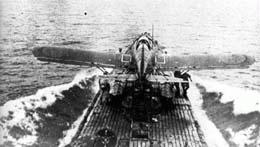In June 1942, a Yokusuka Glen reconnaissance aircraft supposedly launched from a Japanese submarine does not launch and does not overfly Seattle as is reported after World War II. A Japanese submarine capable of carrying an airplane lurks off the Washington coast, but on this particular mission, fuel and supplies replace the aircraft. After the war, U.S. Navy interrogators will erroneously understand that such a mission was launched and will record this as fact in official military reports. Later historians and Japanese veterans will correct the mistake.
At the beginning of World War II, the Imperial Japanese Navy deployed about a dozen long-range submarines which each carried a Yokosuka E-14Y-1 seaplane, code named by the Allies, Glen. The aircraft had folding wings and was stowed in a watertight hanger on the deck of the submarine. It was launched on the surface by catapult and recovered with a derrick. Each Glen carried a crew of two men and one machine gun, and could carry two 170-pound bombs. Glens launched from submarines successfully carried out reconnaissance missions of New Zealand, Australia, Alaska, and the U.S. West Coast. In October 1942, a Glenn launched from submarine I-26 twice dropped incendiary bombs on forests near Brookings, Oregon. The Japanese had hoped to cause devastating forest fires, but there was little damage.
After the war, a U.S. Navy interrogator apparently misunderstood a Japanese staff officer, Masatake Okumiya, and recorded that in June 1942, a submarine had launched a reconnaissance by air from the Pacific against Seattle to observe any warships, particularly aircraft carriers. This was published in official military documents and picked up by official military and civilian historians. The disclosure came as a disappointment to those responsible for Seattle's air defenses at the time since the intrusion went undetected.
In 1974, the staff officer, by then a retired Lieutenant General of the Japanese Air Self Defense Forces, attributed the error to problems in interpretation. The surviving commander of I-26, the only submarine operating along the Washington coast at the time, reported that on that voyage, the aircraft hanger was filled with food and supplies for a long voyage and he carried no airplane.

